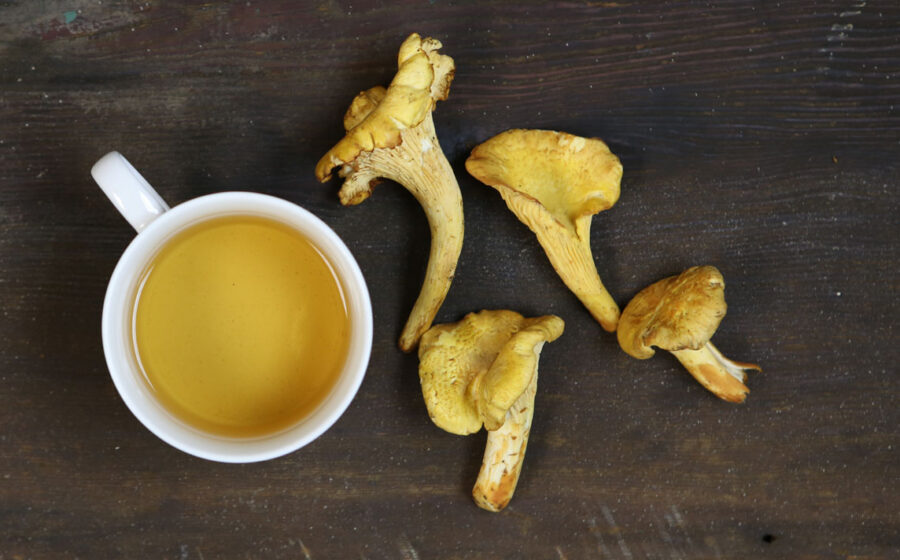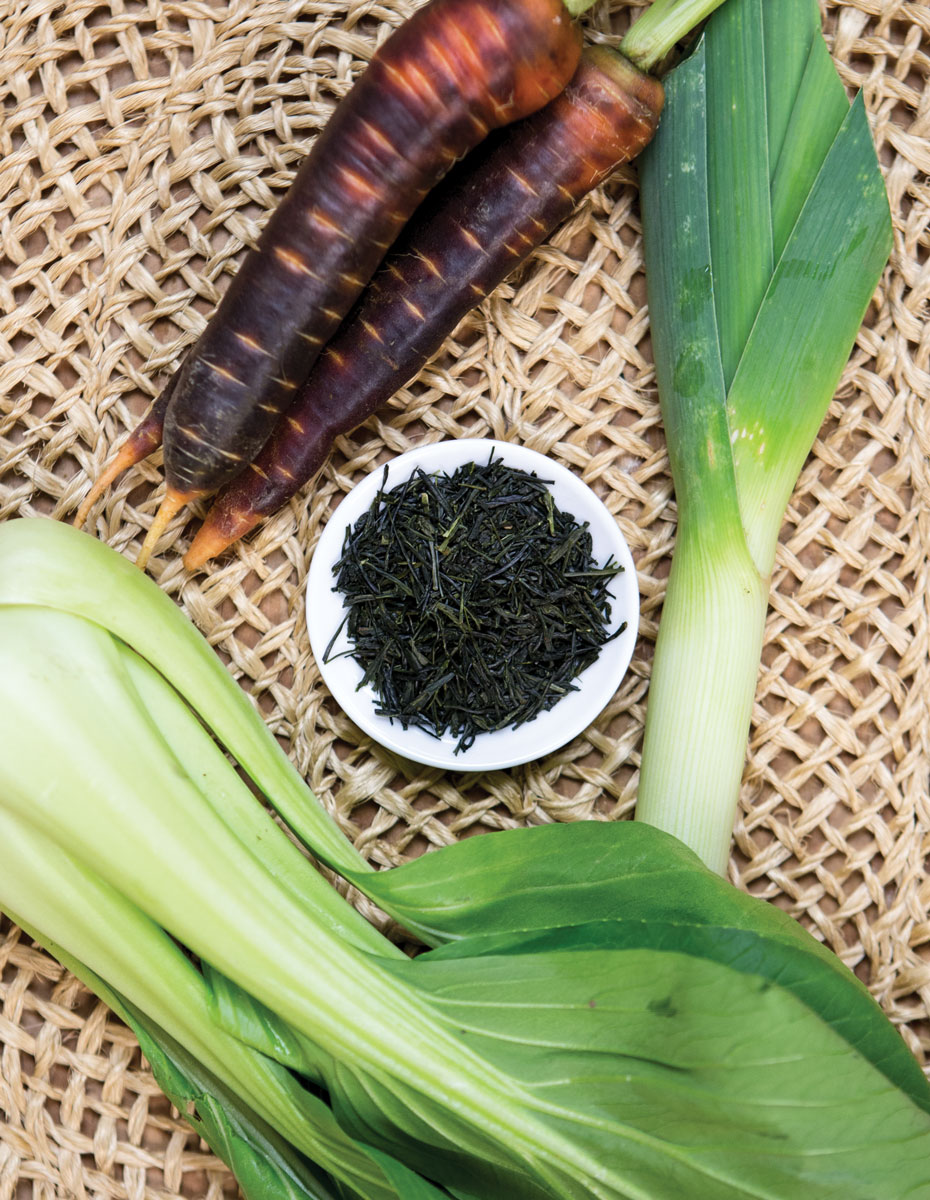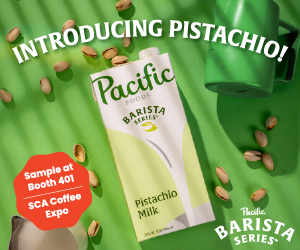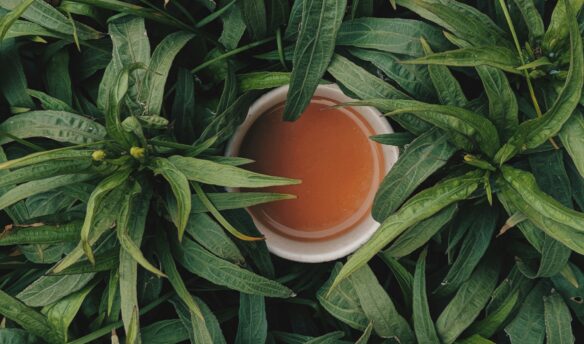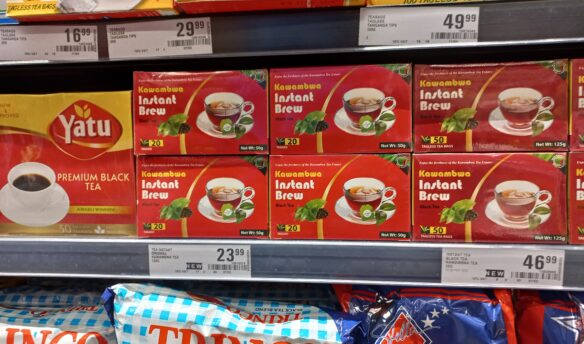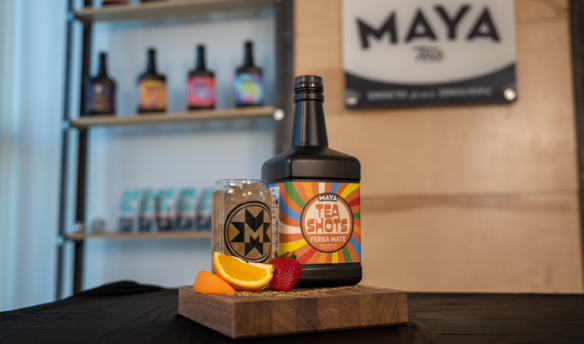[A] pastry with one’s morning latte seems de rigueur in modern coffeehouse culture, much like the after-dinner espresso at fine restaurants. But what about an Earl Grey and a croissant, or even a post-meal jasmine tea with chocolate pots de crème? The art of pairing a roasted oolong and French comté may seem even more unfamiliar—as opposed to say, comté and cabernet—but the tradition of joining tea and cheese dates back centuries. Workers in Victorian England ended a long day in the factories with high tea at home, a rustic family meal of cheeses, breads, and meat pies, often accompanied by pots of tea, and perhaps a few swigs of beer. Though starting as a laborer’s meal, high tea came to be associated with the leisure classes over time and the more luxurious afternoon tea menu of cucumber sandwiches, scones, and clotted cream. However, the custom of drinking tea with supper (and lunch or breakfast, for that matter) has its roots in everyday life.
Plenty of folks are familiar with the classic maxim of wine and cheese matchmaking: if it grows together, it goes together. A French sheep’s milk cheese served with Bordeaux seems like standard cocktail party fare. But pairing tea and cheese, or tea and many other Western foods, somehow feels like strange, uncharted territory. Must a Chinese pu-erh only be paired with dim sum or a matcha only with sushi? Both are fantastic, time-tested traditions. (Weary travelers on the Silk Road would most likely have stopped for a dark tea and a dumpling-like snack during their journey.) Today, the prospect of marrying teas with the plethora of global cuisine available to most of us on a daily basis opens up worlds of possibility.
There are thousands of teas to underscore or draw out the nuances of different seasons, moods, and flavors. Tea companies and sommeliers often work with restaurants to suggest teas that pair well with changing menus. “Tea’s a natural part of local, seasonal cuisine,” says Linda Villano of SerendipiTea, a company with a long history of supplying restaurants on the East Coast. Joe Uhl of Joseph Wesley Black Tea, a Detroit-based tea company that supplies American restaurants with single-origin teas, says, “One of the many wonderful aspects of local farm-to-table movements is that many people are curious to develop their palates, are focusing more on pure, essential flavors, and trying new combinations.”
Tea is very similar to wine when it comes to pairing with food. There’s a way to do it so that each enhances the other.
If pairing wines and foods makes more sense to you, that’s not a bad place to start. “Tea is very similar to wine when it comes to pairing with food,” says François-Xavier Delmas, founder of Palais des Thés, a decades-old French teamaker which supplies tea to the Plaza Hotel in New York and has two shops in the city. “There’s a way to do it so that each enhances the flavors of the other.” Much like wine, tea may also be seen on a spectrum, ranging from lightest to most full-bodied, with unprocessed white teas comparable to champagnes, and darker pu-erhs standing in for aged reds.
Tea with cheese is very common in France, according to Delmas, as is tea and pastries. One of his all-time personal favorites is the rustic combination of ossau-iraty, a sheep’s milk cheese produced in the Pyrenees, with a semi-oxidized oolong like Palais des Thés’ Butterfly of Taiwan. The ossau’s gruyere-like, nutty sweetness complements the mellow wood and honey characteristics of a semi-oxidized oolong such as Butterfly.
Palais des Thés provides tea for the Dominique Ansel bakery down the street from its own SoHo shop, where New Yorkers line up at the crack of dawn each morning in the hopes of snagging the famous Cronut. In a tasting last spring, the French teamaker served a lavender- and rhubarb-scented black tea with Ansel’s caramelized custard canelés, resulting in a darkly sweet and floral third flavor that verges on Gothic Romantic. Their Hammam blend—a green tea with roses and notes of berry and orange blossom—is popular in Turkey with rose or orange flower lokum, says Delmas.
This summer, Brooklyn tea atelier Bellocq teamed up with the French Cheese Board to deliver an exquisite roster of pairings featuring six types of tea. Bellocq furnishes a bevy of locations in New York, from haute bagel shop Black Seed to afternoon tea service at the Waldorf Astoria and Brooklyn’s Michelin-starred Meadowsweet. Among other revelations from the tasting, I discovered that golden pu-erhs go well with pungent époisses de Bourgogne, a favorite cheese of Napoleon. This dazzling duo felt like a number from Fred Astaire and Ginger Rogers: playful and technically astonishing. It provided elements of leather, wood, and cocoa. Another stunner was the decadent brillat-savarin—a triple-cream brie-like cheese—and green sencha with rose petals and grassy, oceanic notes. The voluptuous combination evoked fields of flowers by the sea, taking the tasting experience to a whole new level by creating a third flavor, as great pairings tend to do.
The voluptuous combination evoked fields of flowers by the sea, taking the tasting experience to a whole new level by creating a third flavor.
Another great match is the combination of a dark fermented pu-erh and mushrooms, according to tea sommelier and chef Melanie Franks, who creates extensive multi-course tea dinners with purveyors like East Coast–based In Pursuit of Tea. Rich and earthy pu-erh smells like soil after it has rained and evokes mushroom foraging. Dried mushrooms work especially well with strong pu-erhs given their pronounced flavor, Franks says. One of her culinary creations is udon noodles made from hojicha—a roasted green tea with strong, earthy flavors—topped with slow-cooked egg, mustard greens, and pu-erh broth—a warm, grounding soup for fall and winter nights. Pu-erh could also be paired well with an aged comté or dark chocolate, both of which have strong and slightly sweet qualities to stand up to the tea and help round it out.
Many green teas work well with fresh goat cheeses or brie, and may be considered a natural pairing in spring or summer, in the way that a dark and earthy pu-erh with mushrooms seems so right for fall. Matcha’s a nice fit for raw or partially cooked vegetables, suggested Franks, since the green flavors in each complement one another. (She makes a matcha flatbread with beets and goat cheese). I was also struck by the combination of a delicate white bai mu dan and ricotta cheese at a pairing hosted by Silk Road Teas and Murray’s Cheese in New York last spring: a light, refreshing treat to cool down on summer days.
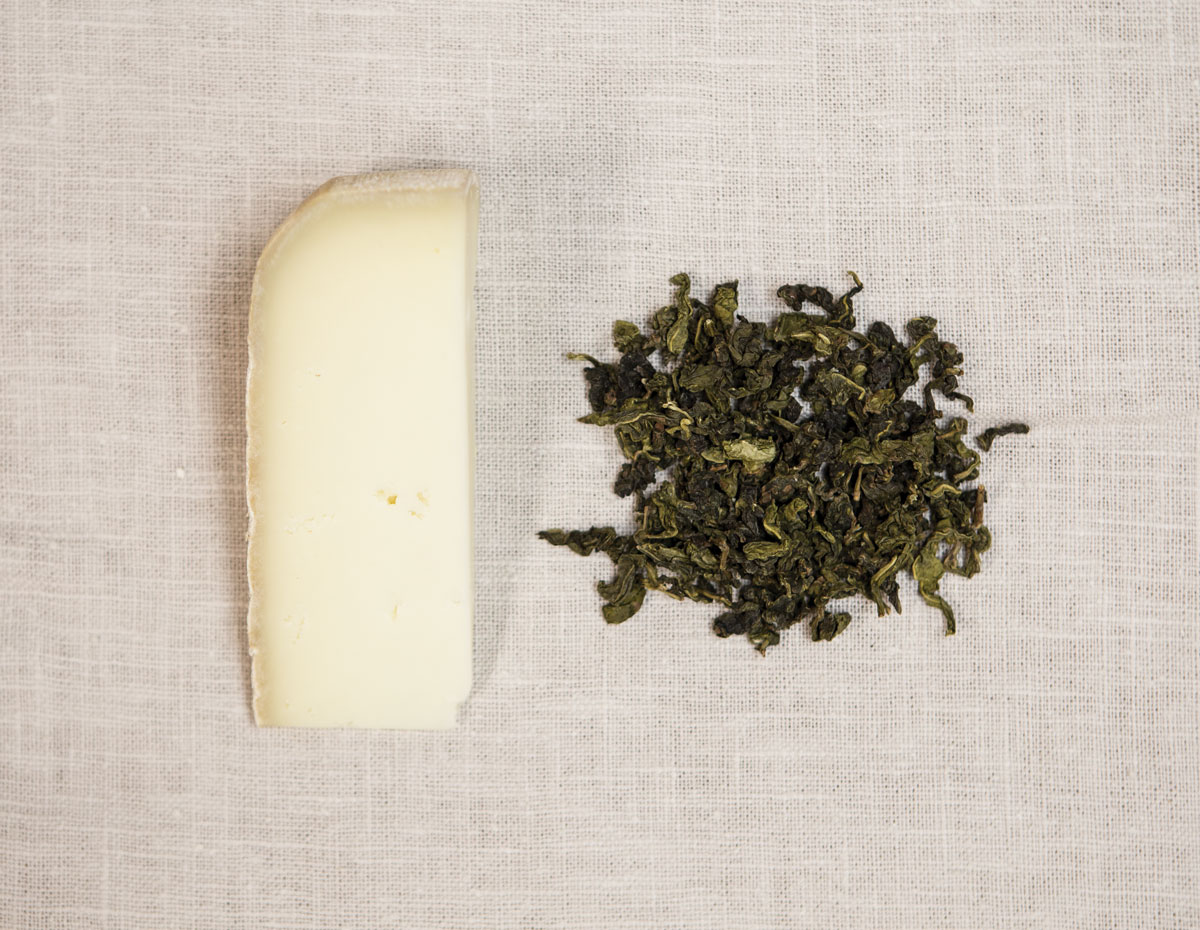
On the West Coast, Portland’s Steven Smith Teamaker has worked closely with local food producers over the years and recently released a collaboration with chefs called the Maker’s Series. Their first offering was a limited edition oolong ice cream tea, a Taiwanese milk oolong with jasmine, vanilla, and Marcona almonds that Smith’s Tony Tellin developed with ice cream maker Salt & Straw this past summer. Their second collaboration was with Vitaly Paley of Paley’s Place, Imperial, and Portland Penny Diner. Paley enjoys drawing from seasonal Pacific Northwest ingredients that resemble the mushrooms, berries, and game he knew growing up in Belarus, and recalls friends and family drinking tea like water back in Russia. He and Tellin created a Georgian Caravan tea early this fall, a blend of hickory-smoked black teas combined with Oregon-made huckleberry jam that borrows from the Russian tradition of sweetening tea with jam rather than sugar. Huckleberries are also common to Belarus and northern Russia, said Paley. “The astringency of the berries complements the tannins in the tea,” he added. “The sweetness of the jam makes it sing.” Paley’s mother, Genya, a New York-based piano teacher who often advises Paley on Russian recipes and traditions, gave the Georgian Caravan a nod of approval, indicating that it evoked strong personal memories of home.
San Francisco’s Samovar, which supplies tea to Blue Bottle Coffee, serves full tea menus inspired by global cuisine in its Bay Area lounges, from a Russian-influenced tray of borscht and tea-smoked chicken accompanied by a pot of smoky lapsang souchong, to a kaiseki-like Japanese meal with rice, seaweed, and the nutty ryokucha green tea with toasted brown rice (a tea akin to genmaicha). Samovar also has a range of salads, sandwiches, and small bites that can be mixed and matched with its teas, much like New York’s Harney & Sons café, where diners can order cheddar and chive biscuits a la carte or a fall salad dressed in a vinaigrette infused with the company’s Boston blend of black tea, almond, and cranberries. The Harney café offers a traditional British tea service as well as global fusions like gravlax canapés, with lapsang souchong-dusted smoked salmon and matcha cream cheese on Japanese rice crackers. “People don’t always have the time to sit down and enjoy a full tea service, or they feel it’s just too much food for one sitting,” said Emeric Harney. “We wanted to marry culinary traditions from around the world and offer customers something a little bit different with smaller plates.”
You don’t need to be an expert to delve into tea and food pairings, or memorize a list of what goes with what. What it comes down to, said Delmas, is curiosity and the willingness to experiment and be surprised. You can start by drawing from a reserve of flavors you already know, said Villano, such as a genmaicha and white chocolate resembling a bowl of milk and Rice Krispies. It’s worth identifying what the underlying flavors are in particular teas and food, and even contrasting them. Taste as much as you can, use your imagination, and create flavors that can only come from pairing food with tea.
—Rachel Safko is a freelance writer based in Brooklyn.


